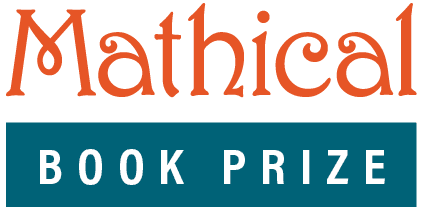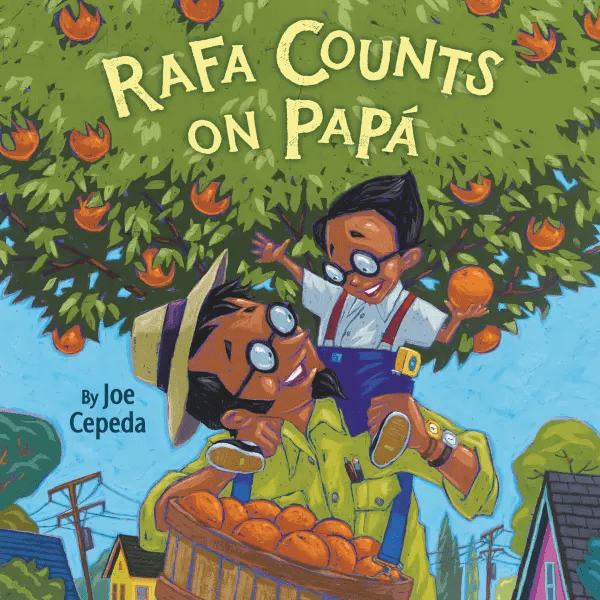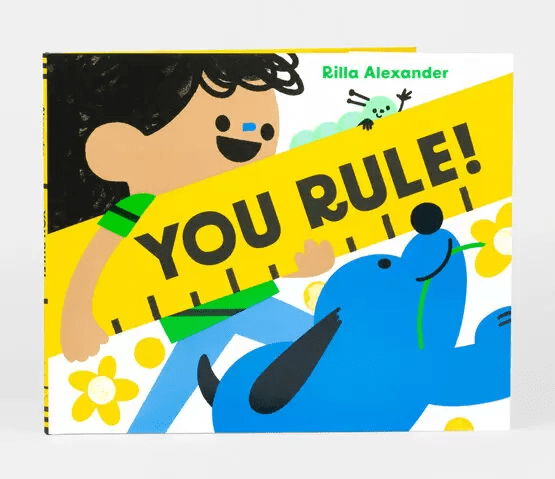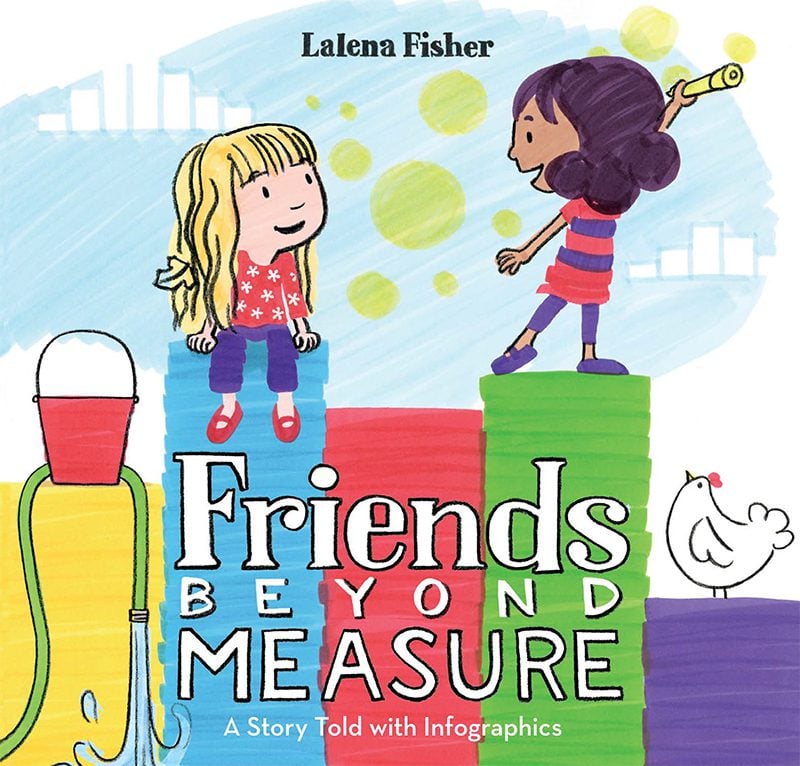Serie: Book Ideas
From Sunflowers to Friendship: Four Meaningful Math Books on Measurement
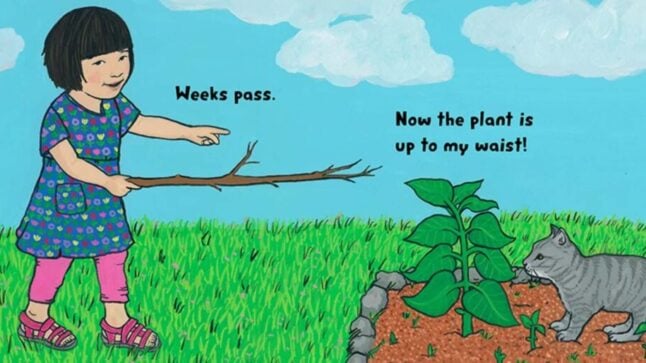
Measurement is a topic with a lot of early math big ideas and books are wonderful portals to explore them. Plus, children’s books provide an easy platform for repeated, playful conversation. When reading books about measurement and size, adults should notice and talk about the height, length, width and weight of different things in the story. This article features 4 measurement inspired books, all recent winners of the Premio Libro de Matemáticas in 2024! If you want more ideas about how to talk to kids about the math in these books, a couple of the books have a great reading guide created by The Early Math Project.
1. Up to My Knees by Grace Lin
Children’s measurement experiences typically begin with their innate fascination with size; they often ask What is biggest? However, in this book they’ll learn that something isn’t just “big” – it can be “longer” or “taller” like the sunflower seed Mei plants and watches grow. In Up to My Knees Mei explores measurement as she compares the height of the growing sunflower plant to the height of her toe, knees, waist and shoulder–eventually growing to be taller than Mei!
To build on the measurement ideas in this book, encourage children to search for things to compare as Mei does in the book. The key is supporting their discovery with specific, more precise language. When your child (or student) says, “Your stick is bigger than mine” you can support their understanding by saying “your stick is shorter than mine” or “my stick is más than yours” and using gestures to make the meaning clear.
View The Early Math Project’s reading guide for Up to My Knees by Grace Lin
2. Rafa Counts on Papa by Joe Cepeda
Rafa and his papa love to count and measure their world together with playful curiosity. They measure the branches they climb, how fast they run and how high the dog jumps to grab a bone! Rafa invites readers to think more flexibly about what we mean by “measure,” exploring length, time, height, and sound.
Ask children what they are curious about measuring in their daily life. How far is the walk to a friend’s house? How much flour do I need to make muffins? How loud is the robin chirping outside my window? While some of these questions are harder to answer than others, they all can inspire great math thinking and conversation.
3. You Rule by Rilla Alexander
You won’t find quantities or numerals in this math-inspired book; instead, you’ll find playful, fantastic, rich language celebrating children’s impossible-to-answer questions.
“How tall are you?” asks our curious narrator; sky-high, towering, just-right, teeny tiny, and microscopic are the “units” of measurement on these bright and engaging illustrations. Language, especially the kind of precise, descriptive, attribute language, featured in this book, builds young children’s mathematical thinking. The illustrations are attractive, bold and inviting and the language is poetic and funny.
The next time a child gives you an impossible-to-answer question take a page from You Rule and have fun offering playful, silly, language-rich answers.
4. Friends beyond Measure; A Story Told with Infographics by Lalena Fisher
Ana and her best friend Harwin love to measure or collect data about their friendship. They record the ingredients in their fairy tea recipe, take notes on how high they can climb trees and calculate time spent playing at each other’s houses. Unlike other measurement books, the author, illustrator Lalena Fisher organizes each of the data sets these friends produce into a visually enticing, child-friendly infographic. The book is also about friendship; each of the colorfully illustrated infographics are a reflection and documentation of their changing relationship. This book will spark wonder, enjoyment and conversation. Ask children if they are inspired to create their own infographic based on their lives after reading it.
View the reading guide from The Early Math Project for Friends beyond Measure
